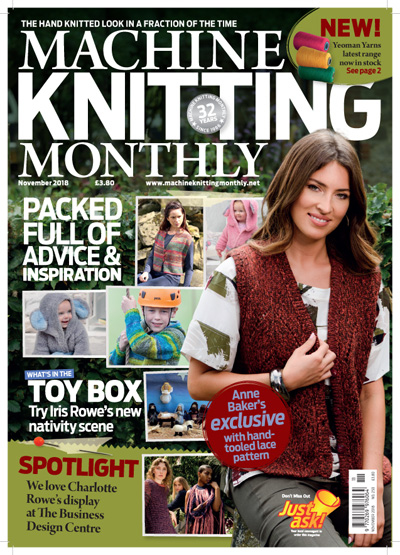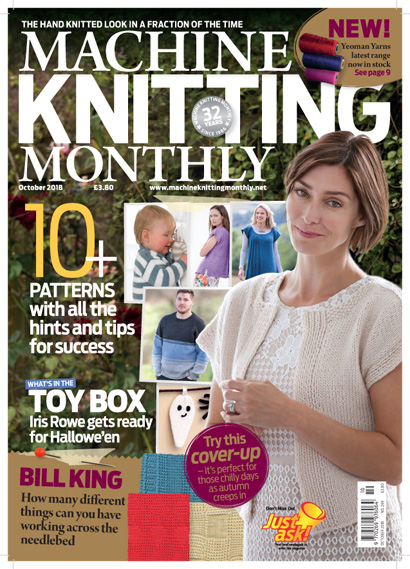
Dear Readers
Those of you who know me well (and there are a lot of you!) will chuckle when this magazine arrives. I find it so hard to work on the Christmas issue. We started the patterns way back in the heatwave and the January issue is well on the way. February has to be printed before Christmas to go out on time in the New Year and I’m heading towards our 33rd birthday issue before a mince pie has been made. You’d think I’d had sufficient practice by now!
Thinking about the seasons coming and going brought up a very interesting observation, both during and after our Bournemouth show at the beginning of October. Many visitors came with quite different needs and expectations. In March, everyone has finished packing away the evidence of festivities and machines are reinstated in their familiar places. A lot of clubs don’t meet in December and only just get going in January, so Bournemouth can be the first outing of the year. Having had quite a long break since making last-minute knits, visitors have often ‘lost touch’ with their knitting. They come in March to be inspired and look for ideas to help them start knitting again. Following the long and hot summer break, our Bournemouth visitors in October knew exactly what they wanted to knit and came to buy yarn, patterns and accessories. Anne Croucher spent a while in her Knitting Clinic showing one knitter how to make Christmas Stockings and there was lots of yarn for sale to get her going. When visitors leave, they often thank me for the show and hope I’ll do another the following year. This time, though, they added: “Any chance we can have it in October again?”. Machine Knitting LIVE! has always been organised by machine knitters for machine knitters, so if you’ve a strong opinion about having the Bournemouth Show in March or October, please get in touch as soon as you can.
You’ll see there’s a good selection of patterns this month for mid-gauge and chunky machines. Please don’t throw your hands up in despair if you only use a standard gauge model and like the style, but wish it had been in four ply. For anyone who doesn’t use a charting device, there’s a conversion factor given with each pattern, for both stitches and rows. Multiply the stitches and rows given for your size in the pattern by these numbers and, with a few minor adjustments, you’ll replicate the blocking diagram shapes. Have a trial run and do it just once, perhaps with a baby cardigan or something small. The garment can go in a charity box and you’ll then have the confidence to discover how easy it is to do. With six weeks to go before the ‘big day’, all that remains is for us to fit in a bit of festive knitting before we’re needed in the kitchen!
NEXT ISSUE
January 2019
Subscription copies sent out
Thursday 6th December
On sale
Thursday 13th December
Ask your newsagent to
Reserve a copy – see page 61





